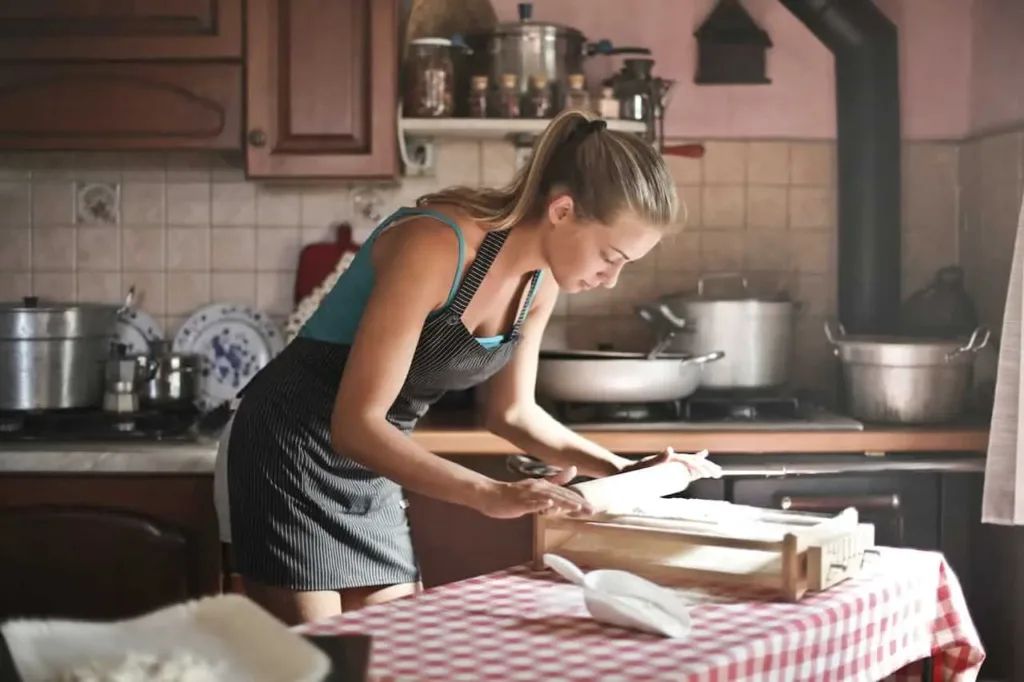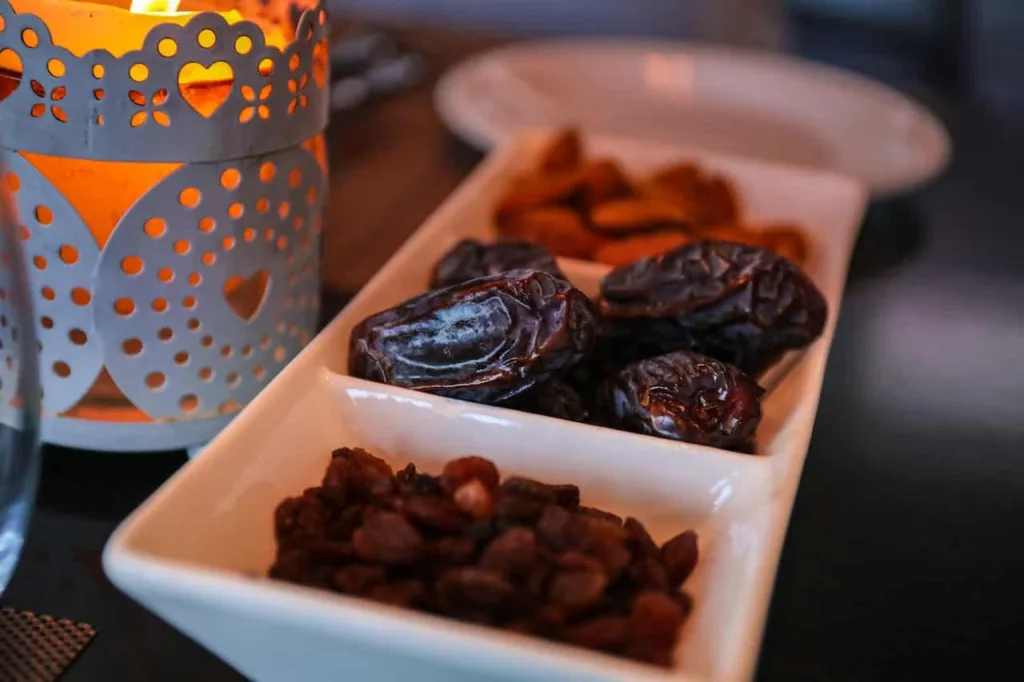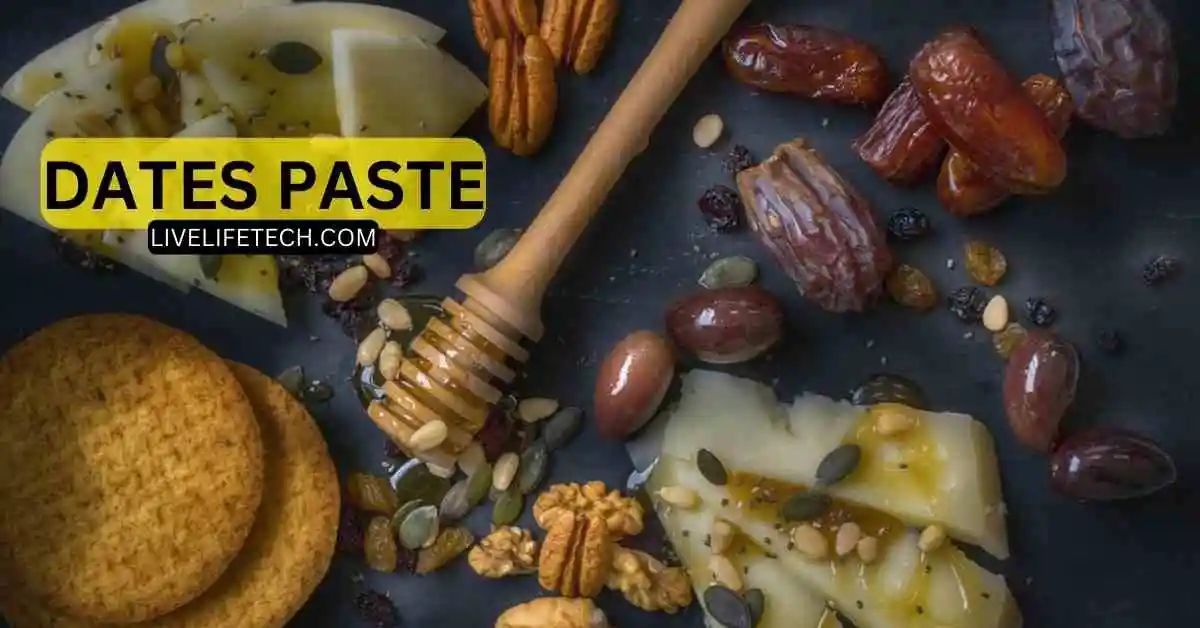Introduction To How To Make Date Paste?
How To Make Date Paste? In pursuing more wholesome alternatives to processed sugar, date paste has gracefully become a darling within health-conscious gastronomy. This organic sweetener, derived from nutrient-rich dates, offers a straightforward preparation process and is versatile in your culinary repertoire. Within this discourse, we shall delve into the intricacies of date paste, what it entails, the art of crafting it in your kitchen, and an examination of its merits and demerits. Let us embark on this flavorful journey!
What is Date Paste?
Ever pondered the uniqueness of date paste? This sweet ambrosia emerges from the harmonious blend of predominantly Medjool dates and water, resulting in a velvety, seamless texture. Picture it as a natural, healthful alternative to processed sugars, presenting a tantalizing caramel-esque essence that effortlessly integrates into an array of dishes, from delectable desserts to savory sauces. What distinguishes it is not merely its sweetness but its commendable nutritional composition. Indeed, date paste transcends sweetness; it bestows a wealth of fiber and essential nutrients, such as potassium and magnesium. When you’re orchestrating culinary wonders, bear in mind that date paste can be a transformative ingredient!
The Process: Making Date Paste at Home

Embarking on the odyssey to concoct your homemade date paste? Let’s immerse ourselves in the straightforward steps! Commence by liberating your dates from their seeds. Subsequently, indulge them in a warm water bath, allowing a leisurely soak for approximately 15 to 30 minutes. This spa-like treatment renders them supple, ideal for the forthcoming blending extravaganza. Following this revitalizing soak, decant the water, preserving it as an invaluable ally in attaining the perfect paste consistency.
Now, usher in your trusty blender or food processor to join the festivity. Introduce your softened dates to its chamber and initiate the blending symphony. As the dates metamorphose into a creamy amalgamation, gradually introduce the reserved water, ensuring a silky, effortlessly spreadable paste. Should it veer towards excessive thickness, consider a reasonable water addition; conversely, if thinness prevails, augment it with a handful more dates.
Behold! You’ve successfully birthed your date paste. Remember, this nectarous creation is not a one-time spectacle. Safeguard it within an airtight vessel and tuck it into the fridge. This homemade treasure retains its allure for up to three lunar cycles, poised to enrich your recipes and uplift your dishes with its innate sweetness. Wasn’t that an uncomplicated endeavor?
Advantages of Using Date Paste

What renders date paste a triumph in your culinary realm? A plethora of virtues! Its paramount allure emanates from the nutritional bounty it unfurls. As a natural sweetener, date paste imparts sweetness and delivers dietary fiber, potent antioxidants, and essential minerals like potassium and magnesium. Every spoonful thus becomes a dual act of sweetening and nourishing your human vessel.
- Diverging from refined sugar’s propensity to induce rapid spikes in blood glucose levels, paste boasts a low glycemic index. This positions it as a more amiable option for those mindful of their sugar intake, including individuals grappling with diabetes, although consultation with their healthcare custodian is advisable.
- Transitioning from processed sugar to paste extends beyond health dividends and proves economical. Fashioning your date paste at home is a frugal endeavor, and a modest quantity goes a considerable distance in infusing a fruity sweetness into your culinary creations.
- Yet, it transcends the realms of health and finance; the gustatory dimension stands equally profound! Paste contributes a gratifying sweetness, subtly tinged with caramel undertones, elevating sweet and savory dishes. Recognize that paste isn’t just a surrogate for sugar; it epitomizes nutritional prowess, eagerly awaiting integration into your culinary routine. So, take the plunge and savor its delectable offerings! There exists a strong likelihood that this sweetener will become a flavorful and advantageous companion in your culinary escapades.
Disadvantages of Using Date Paste
Let’s illuminate the flip side of the coin: the drawbacks of embracing date paste. Every ingredient harbors its challenges, and date paste is no exception. Firstly, the flavor profile. While many praise its caramel-infused sweetness, others find it potentially overwhelming, dominating the palate in certain dishes.
- Next, consider texture. This is where paste diverges from the granulated norm of conventional sugar. Possessing a dense, creamy constitution, it imparts a luxurious touch to certain recipes but may dampen the aspirations of those seeking the characteristic crispiness in, for instance, baked cookies. Date paste might veer towards bestowing a softer and chewier texture than desired.
- Lastly, a pivotal note to engrave in memory is that paste remains a sugar source despite its healthier stance. Prudent consumption becomes imperative. For individuals adhering to a stringent low-sugar regimen or grappling with conditions like diabetes, the sugar content mandates careful consideration. While boasting a lower glycemic index than refined sugar, consultation with a healthcare justice is imperative.
- While date paste could enrich your pantry, awareness of these potential challenges equips you to wield it judiciously in your culinary ventures.
An Essential Tip for Using Date Paste
Eager to infuse the natural allure of paste into your creations? Here’s a salient recommendation: don’t shy away from experimenting across a diverse spectrum of recipes! Whether concocting a refreshing smoothie, hearty oatmeal bowl, or a zesty salad dressing, the paste can impart a delightful, subtly caramel-infused note to your gastronomic creations.
In baking, where refined sugar typically reigns supreme, paste confidently assumes the role of a healthier substitute. However, precision in proportions is paramount for a seamless transition. As a general guideline, consider substituting approximately 2/3 to 3/4 cups of paste for every cup of sugar in your recipe. Understand that this serves as a flexible directive rather than an unyielding rule. The allure of culinary artistry lies in adaptability, allowing you to tweak quantities based on your desired sweetness quotient.
Acknowledge that date paste introduces a distinctive texture compared to granulated sugar. Its lush, creamy nature harmonizes splendidly in certain recipes but may necessitate vigilant observation and adjustments in others. Employing date paste involves a touch of culinary alchemy and an openness to experimentation. Do not be deterred! With each foray, you’ll unravel more about its flavor intricacies and compatibility with diverse recipes, ultimately mastering its sweetness in innovative and delectable ways! So, seize that vessel of homemade date paste and embark on a journey of exploration. The outcomes may astonish you!
Conclusion
When your pursuit involves augmenting health without relinquishing taste, paste emerges as your confectionery, nutritious confidant. This organic sweetener isn’t merely an aesthetic addition; it encapsulates fiber, antioxidants, and vital minerals, infusing a distinct flavor spectrum onto the culinary tableau. The prospect of crafting your paste may appear daunting initially, but with the lucid steps provided, you’ll realize it’s a straightforward endeavor. Yes, challenges exist such as the potent flavor and dense texture, but acknowledging these facets enables you to wield them sagaciously in your creations.
Date paste beckons you to unleash your culinary inventiveness, inviting you to experiment with various recipes. So, embrace this superfood and submerge your taste buds in its caramel-infused allure. Your palate might extend gratitude for the experience! Still, harboring queries? We’ve addressed some of the most frequently posed questions to guide you through your paste odyssey. Remember, the kitchen is your playground, and date paste is your newfound playmate. Dive in and relish the journey, one sweet spoonful at a time!
FAQs
Q. Which variety of dates should I choose to make a date paste?
While the succulent and sweet Medjool dates are often the favored choice, you can explore alternative varieties. The beauty of homemade date paste lies in its adaptability to any date variety at your disposal.
Q. How long can I store my homemade date paste?
Ensconced within a hermetically sealed container, your homemade date paste graciously endures up to three months in the cool confines of your refrigerator. That’s an entire season of sweetness readily at your fingertips!
Q. Can I freeze my date paste?
Affirmative! Freezing date paste is a viable option and recommended for prolonged shelf life. Opt for freezing it in modest, recipe-ready portions for convenient usage.
Q. Is date glue an informed decision for people with diabetes?
Regardless of flaunting a lower glycemic file than refined sugar, date glue holds its pleasantness, meaning sugar content. Those battling with diabetes should participate in discourse with their medical care supplier before integrating it into their dietary routine.
Q. Should I use date glue as a substitute for honey or maple syrup?
Without a doubt! Try different things with date glue as a substitute for sugars, including honey and maple syrup. Careful changes in amounts are prompted as you adjust the taste to your inclination. Remember, the kitchen serves as your trial lab, enticing you to investigate and develop!

Hi, Ali Asghar, your amiable local food and beverage enthusiast. I love to tell stories and desire to discover new flavors, so join me on a delectable voyage through gastronomic delights. 🍌️🥂
